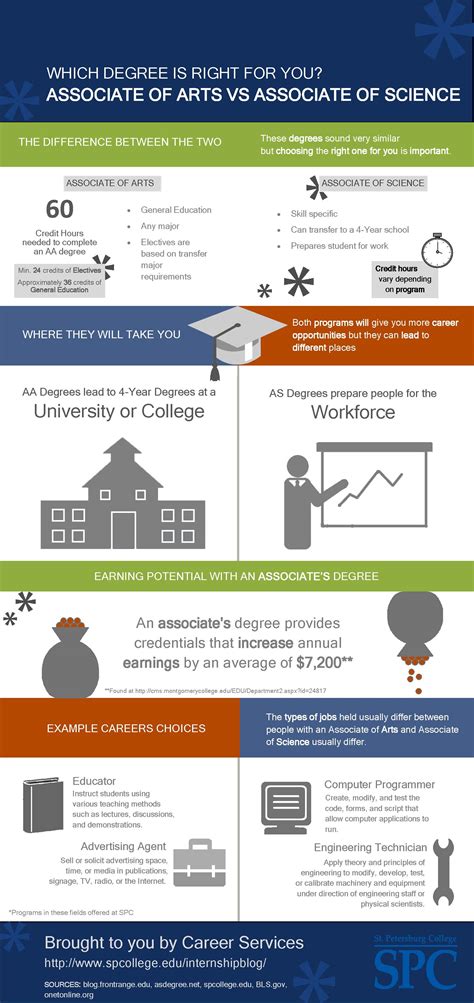In the landscape of higher education, there are numerous degree options to choose from, each with its own unique purpose and requirements. Among the most popular options are Associate of Arts (AA) and Associate of Science (AS) degrees. While both are two-year degrees, there are distinct differences between them that students should be aware of before making their choice.

AA vs AS Degree: A Comprehensive Comparison
| Feature | AA Degree | AS Degree |
|---|---|---|
| Focus | Liberal arts and humanities | Science, technology, math, and engineering (STEM) |
| Coursework | Includes courses in English, history, social sciences, and fine arts | Emphasizes science, math, and technology courses |
| Career Options | Prepares students for careers in fields such as education, business, and social work | Opens doors to careers in science, technology, engineering, and healthcare |
| Transferability | Designed to be easily transferred to four-year institutions | May have limited transferability to certain four-year programs |
AA Degree: A Foundation in Liberal Arts
An AA degree focuses on providing a broad education in the liberal arts and humanities. Students take courses in English, history, social sciences, and fine arts. This comprehensive approach aims to develop critical thinking, communication, and analytical skills essential for success in various fields. AA graduates are well-prepared for careers in areas such as education, business, social work, and public service.
AS Degree: A Pathway to STEM Fields
In contrast, an AS degree emphasizes science, technology, math, and engineering (STEM) courses. Students delve into subjects such as biology, chemistry, physics, and calculus. This specialized curriculum equips graduates with a strong foundation in STEM disciplines, preparing them for careers in scientific research, engineering, healthcare, and technology. AS degrees offer a direct pathway to further education in four-year programs in STEM fields.
Commonalities and Differences in Career Paths
While AA and AS degrees offer different focuses, both can lead to rewarding careers. AA graduates often pursue careers in education, business, and social work. According to the National Center for Education Statistics (NCES), the median annual salary for workers with an AA degree is $56,800.
AS graduates have a wide range of career opportunities in STEM fields. According to the U.S. Bureau of Labor Statistics (BLS), the median annual salary for workers with an AS degree in STEM fields is $73,340.
Tips and Tricks for Choosing Between AA and AS Degrees
- Consider your career goals: Identify the field you are interested in pursuing and determine which degree is better aligned with your aspirations.
- Explore transfer options: If you plan to transfer to a four-year institution, research which programs accept AA or AS degrees.
- Seek guidance from an advisor: Consult with an academic advisor to discuss your academic goals and explore the best degree path for you.
Common Mistakes to Avoid
- Choosing a degree solely based on transferability: While transferability is important, it should not be the only factor in your decision. Consider your career goals and interests first.
- Underestimating the rigor of STEM coursework: AS degrees require a strong foundation in science and math. Ensure you are prepared for the challenging curriculum.
- Neglecting general education courses: Even AS degree graduates benefit from taking courses in the liberal arts, such as English and history, to develop well-rounded knowledge and skills.
Conclusion
Whether you choose an AA or an AS degree, your decision should be guided by your career aspirations and academic strengths. Both degrees offer unique pathways to fulfilling careers. By carefully considering the differences between these two options, you can make an informed choice that sets you on the path to success.
